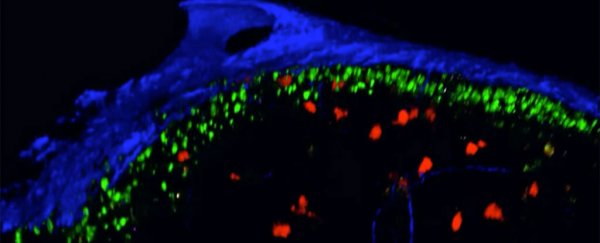In order to get a better handle on how retroviruses like human immunodeficiency virus ( HIV) actually function inside living organisms, researchers have done something we've never seen before – captured video of the virus as it spreads inside a mouse in real time.
To directly visualise HIV in its element, researchers at Yale University in the US used fluorescently stained viruses and filmed them with microscopic imaging technology as they spread within a living, anaesthetised mouse. And it doesn't look anything like they thought it would.
"It's all very different than what people thought," said Walther Mothes, associate professor of microbial pathogenesis and co-senior author of the research, in a press release.
The study, published in Science this month, describes how the researchers were able to visualise the way in which retroviruses disseminate in secondary lymphoid tissues of mice.
What you can see in the video above is the viruses (HIV and murine leukaemia virus, MLV, both in green) arriving at the mouse's lymph node tissue (in blue), where it binds to a layer of sinus-lining macrophages, thanks to a sticky protein called CD169/Siglec–1.
Then, in the video below, a rare subtype of B-cells known as B–1a cells (in red) infiltrate the virus-laden macrophage layer (in green), resulting in the virus attaching itself to the tail of the B–1 cells. The researchers say the infected B–1 cells subsequently migrate into the lymph node, spreading the infection through virological synapses.
After just one or two days, the infected B–1 cells will have enabled full transmission of the virus – but seeing the virus operate up close like this could help scientists find a way to stop HIV.
According to the researchers, if we can find a way to block the action of the sticky CD169/Siglec–1 protein that helps bind the virus to the macrophages, the cellular transmission of the virus could be prevented.
It's early days yet, but these kinds of microscopic techniques could help revolutionise the fight against retroviruses. "The direct study of viral pathogenesis within living animals should reveal more surprises in the future," said Mothes.
